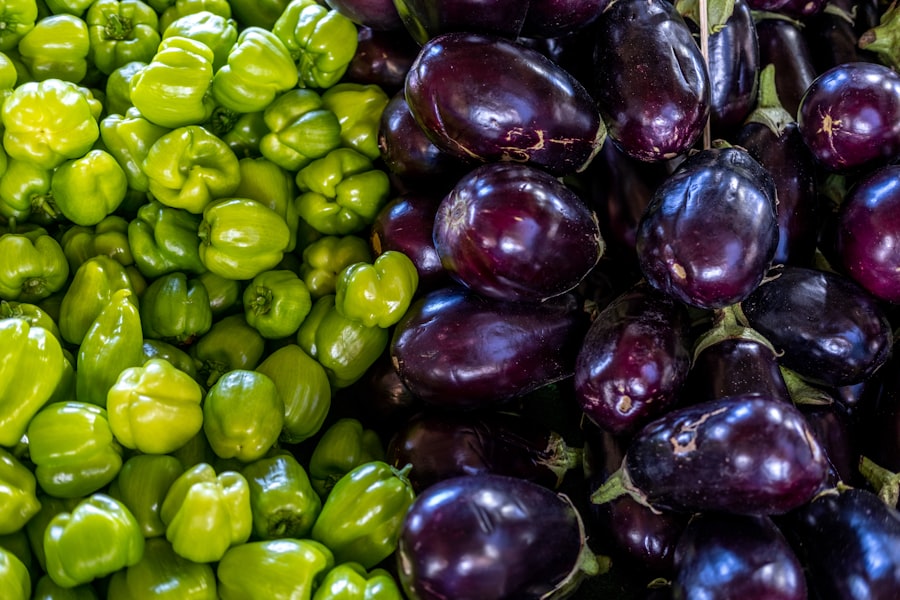In a world where consumerism reigns supreme, the allure of cheap food is undeniable. Many individuals and families gravitate towards budget-friendly options, believing they are making wise financial choices. However, this perception often masks a more complex reality.
The initial savings from purchasing inexpensive food items can be misleading, as they frequently come with hidden costs that extend far beyond the grocery bill. These costs can manifest in various forms, including health issues, environmental degradation, and social injustices, ultimately leading to a greater financial burden in the long run. The convenience of low-priced food can create a false sense of security, leading consumers to overlook the broader implications of their choices.
For instance, while a family may save a few dollars on a fast-food meal, they may unknowingly contribute to a cycle of poor nutrition and health problems that require costly medical interventions later. This paradox highlights the need for consumers to critically evaluate the true cost of their food choices, recognizing that what appears to be a bargain may ultimately lead to greater expenses in terms of health care and environmental restoration.
Key Takeaways
- Cheap food often comes with hidden costs that are not reflected in the price tag, leading to an illusion of savings for consumers.
- The environmental impact of cheap food production contributes to pollution and climate change, with long-term consequences for the planet.
- The health consequences of consuming cheap, processed foods can lead to hidden costs in the form of medical expenses and decreased quality of life.
- Labor exploitation in the production of cheap food has a human cost, affecting the well-being of workers in the industry.
- The ethical implications of cheap food extend to animal welfare, raising concerns about the treatment of animals in the food production process.
Environmental Impact: How Cheap Food Contributes to Pollution and Climate Change
The production of cheap food is often synonymous with practices that prioritize profit over environmental stewardship. Large-scale agricultural operations frequently rely on synthetic fertilizers, pesticides, and monoculture farming techniques that deplete soil health and biodiversity. These practices not only contribute to pollution but also exacerbate climate change by releasing significant amounts of greenhouse gases into the atmosphere.
The reliance on fossil fuels for transportation and processing further compounds these environmental issues, creating a cycle of harm that is difficult to break. Moreover, the environmental impact of cheap food extends beyond the immediate effects of production. The waste generated by the fast-food industry, including packaging and uneaten food, contributes to overflowing landfills and increased methane emissions.
This cycle poses a significant threat not only to the planet but also to future generations who will inherit the consequences of these choices.
Health Consequences: The Hidden Costs of Cheap, Processed Foods

The health implications of consuming cheap, processed foods are profound and far-reaching. Many inexpensive food options are laden with unhealthy ingredients such as added sugars, unhealthy fats, and preservatives. These substances can lead to a myriad of health issues, including obesity, diabetes, heart disease, and other chronic conditions.
While the immediate cost of these foods may be low, the long-term health consequences can result in substantial medical expenses and diminished quality of life. Furthermore, the accessibility of cheap processed foods often correlates with food deserts—areas where fresh produce and healthy options are scarce. In these communities, individuals may find themselves trapped in a cycle of poor nutrition due to limited access to affordable, nutritious foods.
This disparity not only affects physical health but also has psychological implications, as individuals grapple with feelings of frustration and helplessness in their pursuit of healthier lifestyles. The hidden costs associated with cheap food thus extend beyond monetary value, impacting overall well-being and community health.
Labor Exploitation: The Human Cost of Cheap Food Production
| Country | Number of Workers Exploited | Percentage of Total Workforce |
|---|---|---|
| United States | 400,000 | 1.3% |
| China | 2,000,000 | 3.6% |
| India | 1,500,000 | 2.8% |
| Bangladesh | 1,200,000 | 4.2% |
The quest for cheap food often comes at a significant human cost. Labor exploitation is rampant in the agricultural sector, where workers are frequently subjected to poor working conditions, low wages, and lack of job security. Many farmworkers toil long hours under harsh conditions for meager pay, all in the name of producing affordable food for consumers.
This exploitation is particularly pronounced among migrant workers who may lack legal protections and face additional vulnerabilities. The systemic issues surrounding labor in the food industry raise ethical questions about the true cost of cheap food. Consumers may unwittingly support a system that perpetuates inequality and injustice by prioritizing low prices over fair labor practices.
As awareness grows regarding these labor issues, there is an increasing call for transparency in food production and a shift towards supporting ethical sourcing practices that prioritize the rights and well-being of workers.
Animal Welfare: The Ethical Implications of Cheap Food
The production of cheap food often involves practices that raise serious ethical concerns regarding animal welfare. Factory farming—a method employed to maximize efficiency and minimize costs—frequently subjects animals to overcrowded and inhumane living conditions. These practices not only compromise the well-being of animals but also raise questions about the moral implications of consuming products derived from such systems.
As consumers become more aware of these ethical dilemmas, there is a growing demand for humane treatment of animals in food production. Many individuals are beginning to seek out alternatives that prioritize animal welfare, such as pasture-raised or free-range options. This shift reflects a broader societal movement towards more conscious consumption practices that consider not only personal health but also the ethical implications of food choices.
Economic Impact: The Ripple Effect of Cheap Food on Local Farmers and Businesses

The prevalence of cheap food has far-reaching economic consequences that extend beyond individual consumers. Local farmers often struggle to compete with large-scale agricultural operations that can produce food at lower prices due to economies of scale. This competition can lead to the decline of small farms and local businesses, threatening the livelihoods of those who rely on agriculture as their primary source of income.
Moreover, the economic impact of cheap food can create a cycle of dependency on low-cost imports, undermining local economies and reducing community resilience. As consumers increasingly turn to inexpensive options, they inadvertently contribute to a system that prioritizes corporate profits over local sustainability. This dynamic not only affects farmers but also has implications for local economies as a whole, as communities lose out on the benefits of supporting homegrown businesses.
Food Security: How Cheap Food Contributes to Inequality and Food Deserts
The availability of cheap food is often intertwined with issues of food security and inequality. In many urban areas, low-income communities may find themselves surrounded by fast-food chains and convenience stores offering inexpensive but unhealthy options while lacking access to fresh produce and nutritious foods. This phenomenon creates food deserts—areas where residents have limited access to affordable and healthy food choices—exacerbating existing disparities in health and nutrition.
As individuals are forced to rely on low-cost options that lack nutritional value, they may experience higher rates of diet-related diseases and associated healthcare costs. Addressing these disparities requires a multifaceted approach that includes improving access to healthy foods while also promoting education around nutrition and cooking skills.
Government Subsidies: Uncovering the True Cost of Cheap Food
Government subsidies play a significant role in shaping the landscape of cheap food production. In many countries, agricultural policies favor large-scale producers by providing financial support for crops such as corn and soybeans—key ingredients in many processed foods. While these subsidies are intended to stabilize prices and ensure food security, they often contribute to an oversupply of unhealthy options at the expense of more nutritious alternatives.
The implications of these subsidies extend beyond individual consumers; they create an environment where unhealthy foods are more accessible than fresh produce. This imbalance not only affects dietary choices but also perpetuates health disparities among different socioeconomic groups. As policymakers grapple with the complexities of agricultural subsidies, there is an urgent need for reform that prioritizes sustainable practices and supports diverse crop production aimed at improving public health.
Hidden Costs of Convenience: The Impact of Fast Food on Public Health and Infrastructure
The convenience offered by fast-food establishments comes with hidden costs that extend beyond individual health outcomes. As communities increasingly rely on quick-service restaurants for meals, public health systems face mounting challenges related to diet-related diseases such as obesity and diabetes. The prevalence of fast food has been linked to rising healthcare costs as individuals seek treatment for chronic conditions exacerbated by poor dietary choices.
Additionally, the infrastructure required to support fast-food chains—such as roadways designed for easy access—can divert resources away from developing healthier community spaces like parks or farmers’ markets. This reliance on convenience can create environments that prioritize quick consumption over long-term health benefits, ultimately impacting community well-being and quality of life.
Long-Term Consequences: The True Price of Convenience on Future Generations
The long-term consequences of prioritizing convenience through cheap food options are profound and multifaceted. As current generations continue to consume processed foods laden with unhealthy ingredients, they may inadvertently set a precedent for future generations who will inherit these dietary habits. The normalization of unhealthy eating patterns can lead to a cycle where children grow up without an understanding of nutrition or cooking skills necessary for making informed choices.
Moreover, the environmental degradation associated with cheap food production poses significant risks for future generations. As ecosystems become increasingly strained due to unsustainable agricultural practices, the ability to produce healthy food may be compromised. This reality underscores the importance of fostering a culture that values sustainability and health over convenience—a shift that will require collective action from individuals, communities, and policymakers alike.
Sustainable Solutions: How to Address the Hidden Costs of Cheap Food
Addressing the hidden costs associated with cheap food requires a comprehensive approach that encompasses various stakeholders—from consumers to policymakers. One potential solution lies in promoting sustainable agricultural practices that prioritize environmental stewardship while supporting local economies. By investing in regenerative farming techniques and diversifying crop production, communities can work towards creating resilient food systems that benefit both people and the planet.
Additionally, increasing awareness around nutrition education can empower individuals to make informed choices about their diets. Initiatives aimed at improving access to fresh produce in underserved communities can help combat food deserts while promoting healthier eating habits. Ultimately, fostering a culture that values quality over quantity will be essential in addressing the myriad challenges posed by cheap food production—ensuring a healthier future for generations to come.
In conclusion, while cheap food may offer immediate financial relief for consumers, its true costs extend far beyond the grocery bill. From environmental degradation to health consequences and social injustices, the implications are profound and interconnected. By recognizing these hidden costs and advocating for sustainable solutions, society can work towards creating a more equitable and healthy food system for all.
In exploring the hidden costs of cheap food, it’s essential to consider the broader implications on both the environment and public health. An insightful article that delves into these issues can be found on MyGeoQuest. This piece discusses how the pursuit of low-cost food options often leads to unsustainable agricultural practices, which can degrade soil quality and contribute to climate change. Additionally, it highlights the health risks associated with consuming food produced under such conditions, including exposure to harmful chemicals and reduced nutritional value. For a more comprehensive understanding of these hidden costs, you can read the full article here.
WATCH NOW! Why America’s Heartland Is Disappearing Fast
FAQs
What are the hidden costs of cheap food?
The hidden costs of cheap food include environmental degradation, public health issues, and exploitation of labor.
How does cheap food contribute to environmental degradation?
Cheap food production often relies on intensive farming practices that deplete soil fertility, contribute to water pollution, and result in deforestation and loss of biodiversity.
What public health issues are associated with cheap food?
Cheap food is often high in unhealthy additives, preservatives, and artificial ingredients, leading to an increase in diet-related diseases such as obesity, diabetes, and heart disease.
How does cheap food exploit labor?
The demand for cheap food often leads to the exploitation of labor in the form of low wages, poor working conditions, and lack of job security for farm workers and food industry employees.
What are some ways to address the hidden costs of cheap food?
Addressing the hidden costs of cheap food requires promoting sustainable farming practices, supporting fair labor standards, and educating consumers about the true cost of food production.
